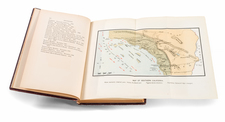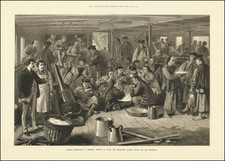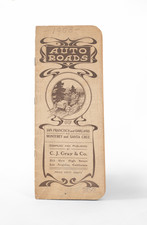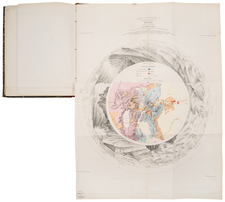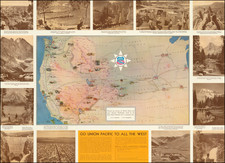Scarce early development map of Dana Point, showing the original developer's town plans, which failed during the Great Depression.
Woodruff's plan shows sites for schools, a library, churches, playgounds, country club and Aeroplane Lanidng Field, adn riding stables, all just south of the Mission San Juan Capistrano. The map references Dana's Stillwater Bay, a reference to Richard Henry Dana's name for the modern Capistano Bay.
Dana Point was named for Richard Henry Dana, Jr., author of "Two Years Before The Mast". Dana referred to Stillwater Bay as the most Romantic spot on the Coast. Dana was traveling aboard the brig Pilgrim, which at the time had to travel to California via Cape Horn and the Straits of Magellan.
In 1923, Los Angeles Times publisher Harry Chandler and General M.H. Sherman, Director of the Pacific Electric Railway Company, created a major real estate group to develop what is known today as the Hollywood Hills, Sidney H. Woodruff, already a prominent Los Angeles homebuilder, was hired to lead the project.
n 1926, Woodruff, Chandler, and Sherman created the Dana Point Syndicate. They invited other prominent Californians, to join them in purchasing 1,388 acres of land, some of which includes the "Headlands" of today. Promising tree-lined, paved streets, electricity, telephones, sidewalks, water mains, storm drains, sewers, and other amenities, Woodruff built 35 homes and a number of commercial buildings. Most of these "Woodruff" houses are concentrated in a Dana Point's historic core, also called Lantern Village,, the streets are named after the different colored lanterns, street of the Violet Lantern, Blue Lantern etc. (colored lanterns were used by ships 200 years ago to advertise their fares when pulled into the Dana Point natural harbor).
Woodruff's crowning structure was to be the Dana Point Inn, a Mediterranean-like resort hotel. After a celebratory groundbreaking in 1930, a three-story foundation was poured and an elevator shaft was dug. Unfortunately, the Depression caused construction to halt. Although Woodruff continuously sought financial support through the years, this project was abandoned in 1939. Subsequently, he sold the remaining holdings of the Dana Point Syndicate. Thirty-four of the original Woodruff residences are still occupied. It was nearly 50 years before the town was ultimately developed.









